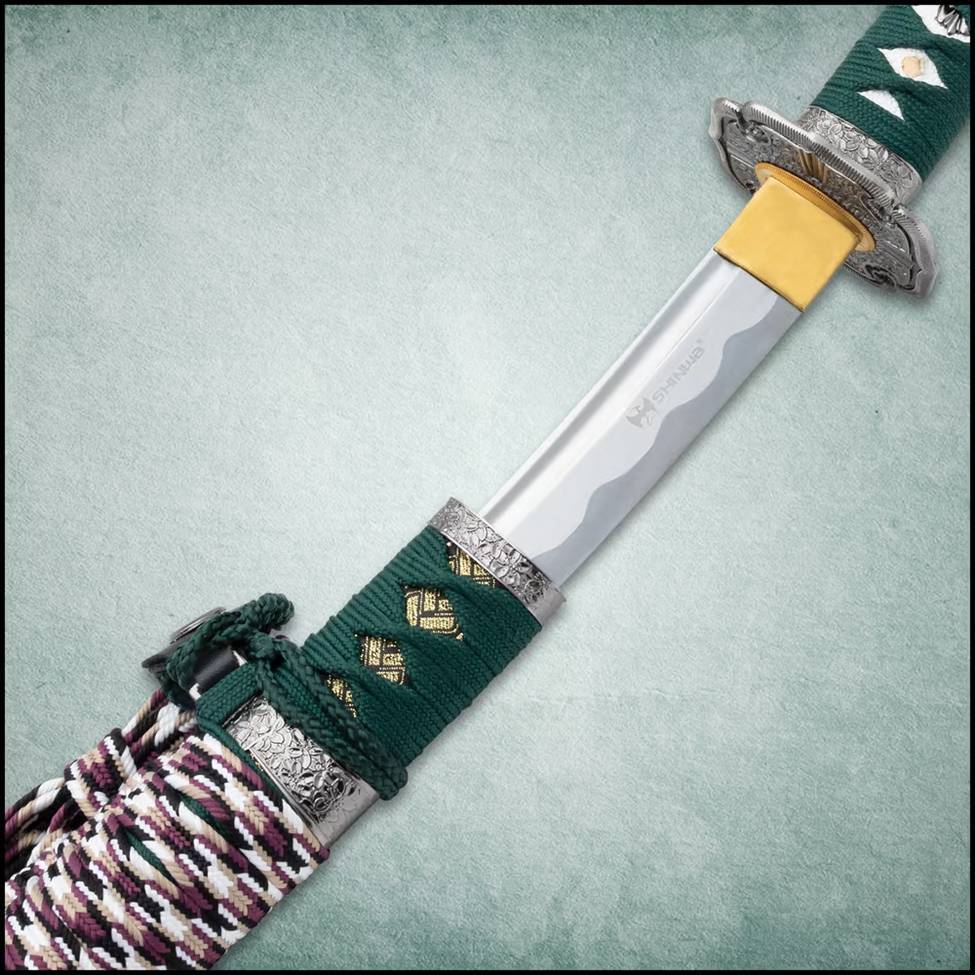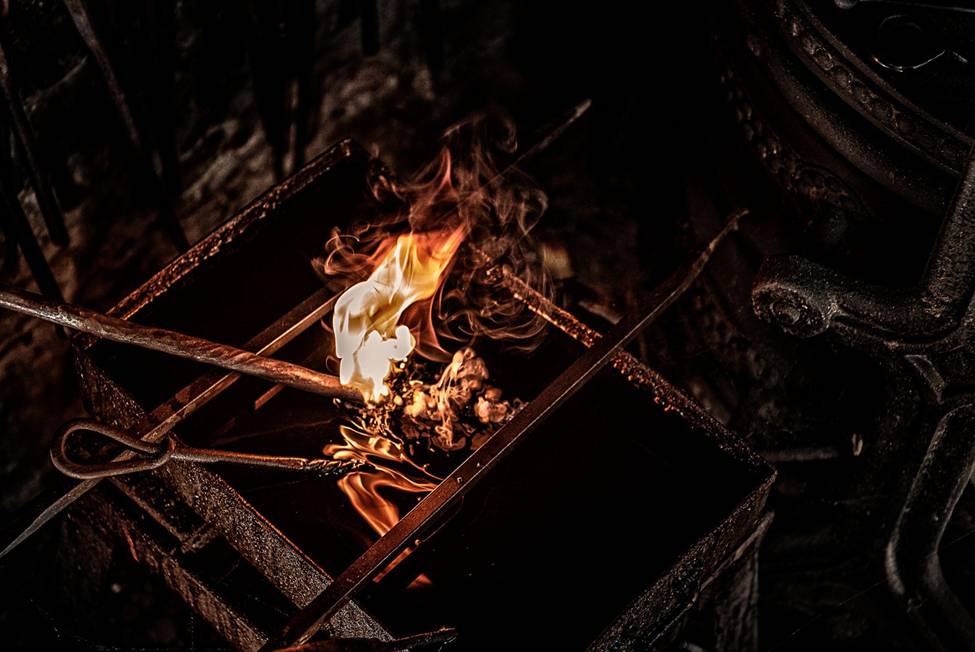About the Hamon of a Real Samurai Sword


If you’ve ever seen or handled a real samurai sword before - such as a katana or an odachi sword - you may be familiar with that cloudy, wavy line along the edge of the blade, which is as unique as a fingerprint, and which adds great beauty to the blade. It is called a hamon, sometimes referred to as a hamon line, and despite its aesthetic graces, it is one of the indelible keys to quality in a real samurai sword. Here’s what you need to know about it.
What Is a Hamon (AKA Hamon Line)
The hamon line of a real samurai sword like a katana or wakizashi is a cloudy, wavy line that follows the sword from the hilt to the tip. The hamon is a mark of differential hardness. It occurs when you apply a differential temper to different pieces of the same stock of steel; the finished steel will have a slightly different color and aspect along both portions of the temper, which will be most noticeable at the margin. There is theoretically more than one way to produce a hamon, but in Japanese swordsmithing, the process is known as Yaki-Ire, which in English we call “clay tempering.”
About Yaki-Ire (AKA Clay Tempering)
In Japanese swordsmithing, after the blade is forged and ground to the desired thickness, shape and dimensions, and is free of any defects, the next step is to apply an appropriate temper. They do this by preparing a special clay mixture, which is made of fine clay and water. Some swordsmiths will add in other materials like charcoal and ash to achieve the desired effect. The clay is then applied to the blade using a brush, spatula, or other tool. It must be applied evenly, and a thicker coating of clay is applied to the spine than to the edge, which is treated with a thinner, lighter coat of clay. Then the blade stock must be placed somewhere with a good deal of ventilation so that the clay can completely cure and dry. If the process of Yaki-Ire is performed without properly drying the clay, it can crack or chip off during heating and quenching.
After the clay has dried fully, the smith will then heat the blade with the clay on it. The temperature to which the blade must be heated is critical to ensuring that it takes the desired properties once quenched. However, as a general rule, the blade stock must be heated to a temperature known as the “austenitizing temperature,” a range between which the steel’s physical properties will change; this range is between 750℃ and 850℃, or 1380℉ and 1560℉. When the steel has converted into the austenitic phase, it must be removed from the heat and then quenched; steel is quenched in water, oil, or sometimes brine, which rapidly cools the steel off, converting it from austenite to martensite.
Rapidly cooling the steel causes it to become much harder, and this is the key to the clay tempering process. The thicker clay on the spine causes the spine of the blade stock to cool off slightly more slowly than the edge. The result is that the edge is harder than the spine. Consequently the edge will hold better and for longer, whereas the softer spine will be better able to handle abuse. By utilizing a differential hardness, the sword will get the benefits of both a hard edge and a more flexible, softer, shock-absorbent spine that helps prevent the blade from shattering. As it turns out, the clay tempering process that yields a differential hardness is also the very thing that creates a hamon line, indicating that the blade is not only capable of holding a sharp edge, but is resistant to chipping or shattering.
What Else Does a Real Samurai Sword Need
A hamon line that indicates a differential temper is not the only attribute of a real samurai sword. Among other things, a real samurai sword must also have a full tang that is secured in the hilt with a bamboo pin known as a mekugi. It should also be made with a suitable steel alloy - but that, of course, is also central to the temper of the steel, so these two traits are inextricably linked. Real samurai swords are also typically made with a special wrap around the hilt that consists of silk or some other fabric laid over rayskin or shark skin. In addition, the saya, or scabbard, should be completed with a cord wrap known as a sageo.
These are a few of the main features of a real samurai sword.
These are a few of the main features of a real samurai sword.


Explore Real Samurai Swords and Other Battle Ready Swords
If you’re here for a real samurai sword or some other battle ready sword, take a look through our collections and get in touch with us directly if you have any questions about construction, quality, or what constitutes a real sword.